Garland, TX Pollen and Allergy Report for Summer 2023
Pollen Allergy Trends in Garland, TX
When is pollen lowest in Garland, TX?

February
Lowest month total PPM
Avg. PPM
When is pollen highest in Garland, TX?

March
Highest month total PPM
Avg. PPM
How does pollen in Garland, TX compare to Texas?
Garland has a higher average PPM than the state of Texas.
Garland yearly avg PPM:
Texas yearly avg PPM:
How does pollen in Garland, TX compare to the USA?
Garland has a higher average PPM than the USA.
Garland yearly avg PPM:
USA yearly avg PPM:
Is pollen worse this year in Garland, TX?
Spring 2023 was worse than spring 2022.
Spring 2023 PPM:
Spring 2022 PPM:
Average PPM in Garland, TX
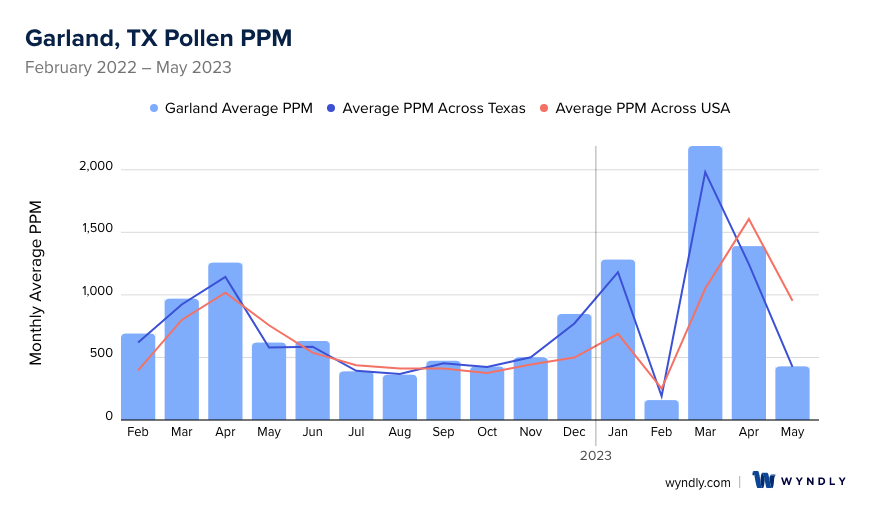
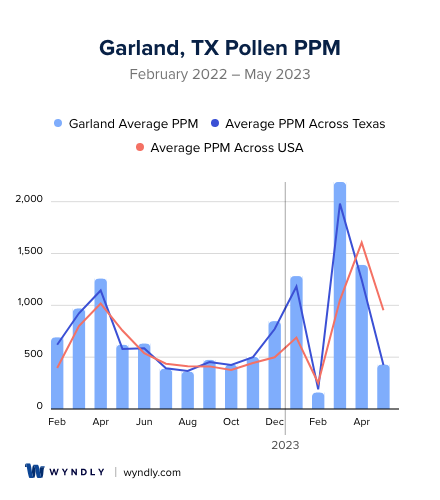
Garland, TX Pollen and Allergy Breakdown by Month
Grass
When is grass pollen highest in Garland, TX?
February has the highest grass pollen in Garland, TX with an average PPM of
When is grass pollen lowest in Garland, TX?
December has the lowest grass pollen in Garland, TX with an average PPM of
Tree
When is tree pollen highest in Garland, TX?
March has the highest tree pollen in Garland, TX with an average PPM of
When is tree pollen lowest in Garland, TX?
July has the lowest tree pollen in Garland, TX with an average PPM of
Weed
When is weed pollen highest in Garland, TX?
December has the highest weed pollen in Garland, TX with an average PPM of
When is weed pollen lowest in Garland, TX?
February has the lowest weed pollen in Garland, TX with an average PPM of
Garland, TX Pollen Monthly Breakdown by Pollen Type
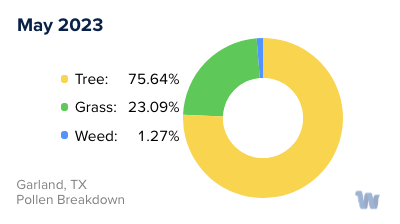
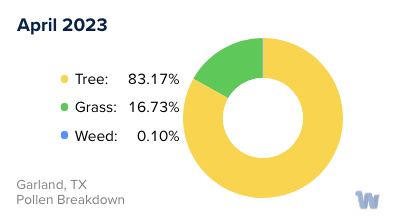
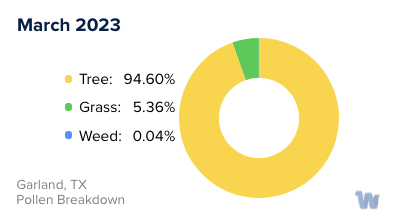
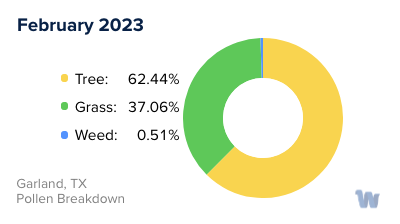
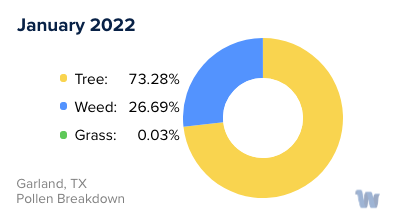
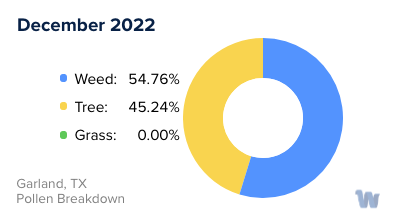
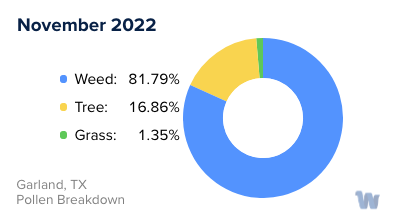
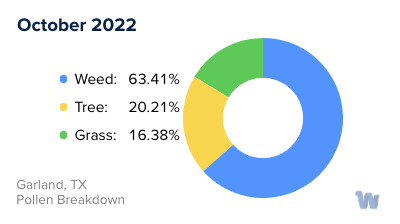
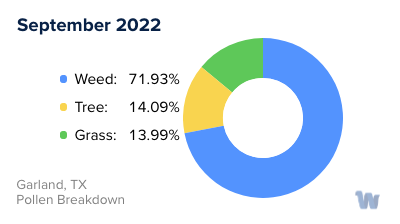
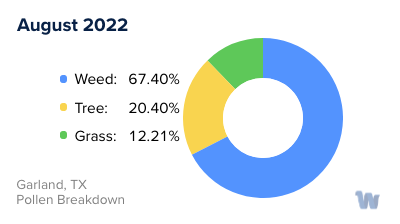
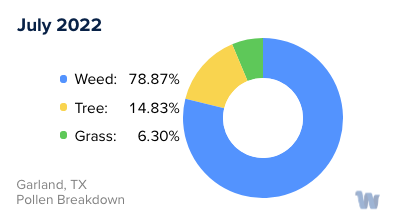
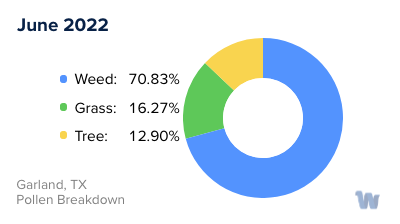
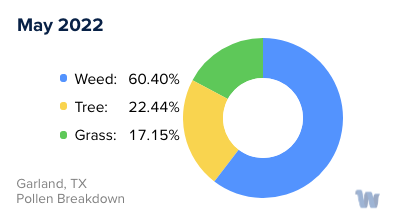
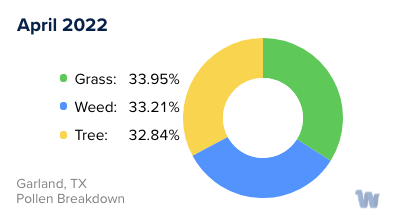
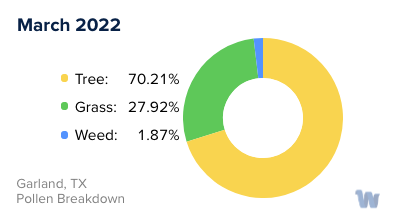
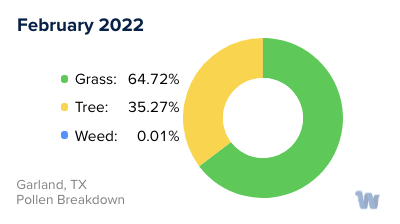
Pollen and Hay Fever in Garland, TX
Pollen allergies and hay fever - or allergic rhinitis - can be a real challenge for residents of Garland, Texas, given the state's unique allergy season that persists all year round. The reason for this is the area's relatively mild winters, which allows for continuous plant growth and consequently, ongoing pollination.
To better understand the pollen allergies in Garland, it's essential to know the types of pollen that are prevalent throughout the year. From November to February, Mountain Cedar pollen reigns, especially potent in Central Texas. The pollen from these trees can lead to symptoms like itchy, watery eyes, a runny or stuffy nose, and sneezing.
As the Mountain Cedar season wraps up, January to May welcomes a new trio of allergens: Elm, Ash, and Mulberry. These three trees produce pollen that can lead to symptoms like sneezing, wheezing, and asthma-like symptoms.
The Oak, Pecan, and Grasses take over from March to May. During springtime, the pollen from oak and pecan trees, as well as grasses such as Bermuda, Johnson, and Kentucky bluegrass, can cause an array of symptoms. These range from the typical runny nose and watery eyes to a sore throat and asthma-like symptoms.
June and July offer a brief respite from the pollen onslaught, as most common sources of allergies stop producing pollen, and pollen counts drop. However, August to November introduces a new allergen: Ragweed. This soft-stemmed, flowering weed is populous in the tropical and subtropical regions of the Americas, particularly in the southwestern U.S. Symptoms during ragweed season include runny noses, sneezing, itchy eyes, and in severe cases, asthma flares.
By the time the ragweed season starts to taper off in November, it's time for the Mountain Cedar to bloom again, restarting the Texas allergy season calendar in its relentless cycle. Despite the challenges, understanding the seasonal shifts in pollen types can be an empowering tool in managing the impact of pollen allergies and hay fever for residents of Garland, Texas.


